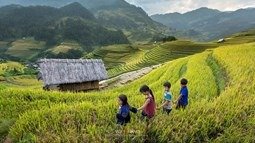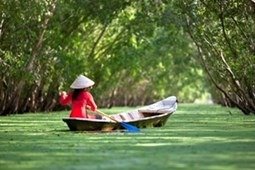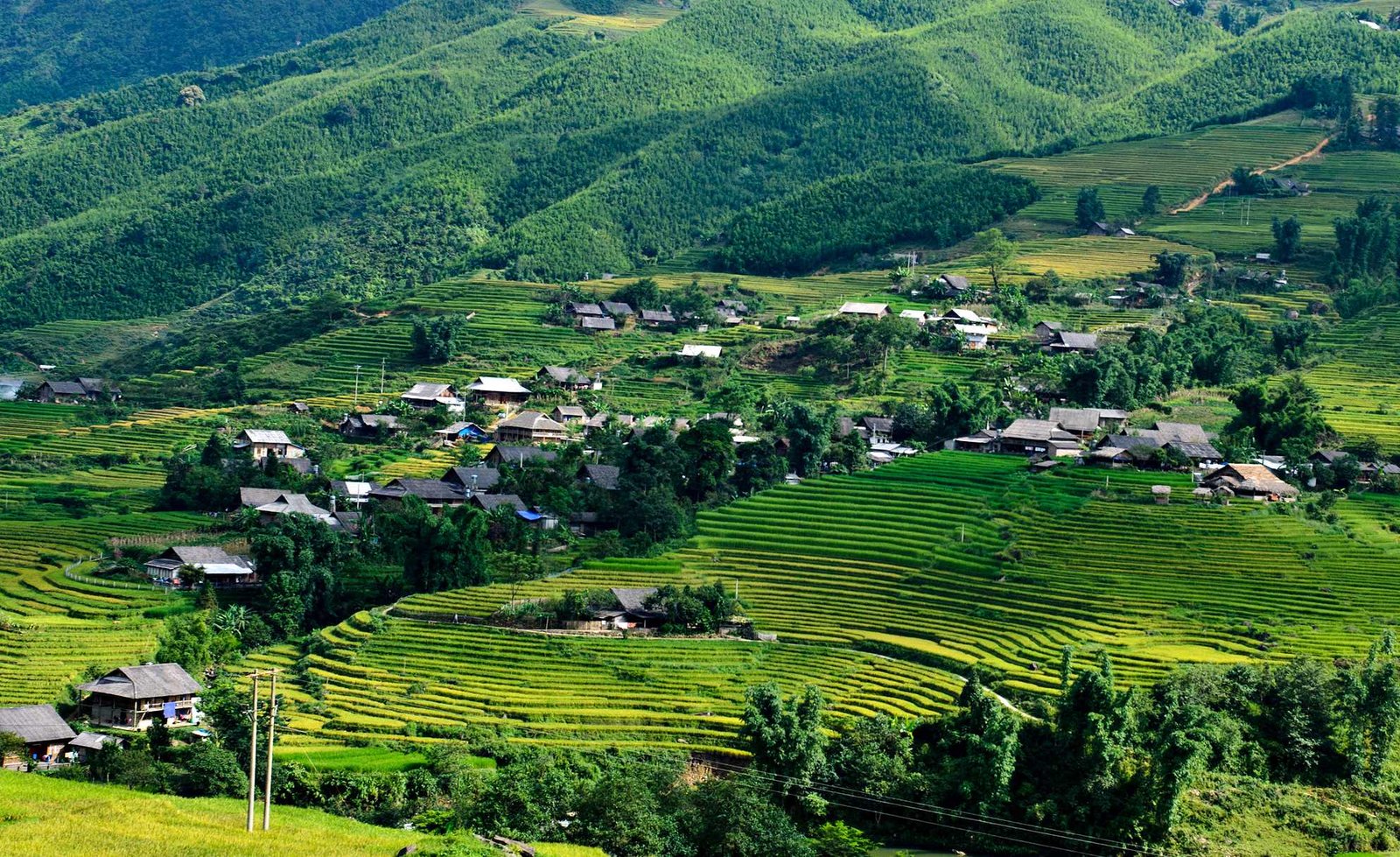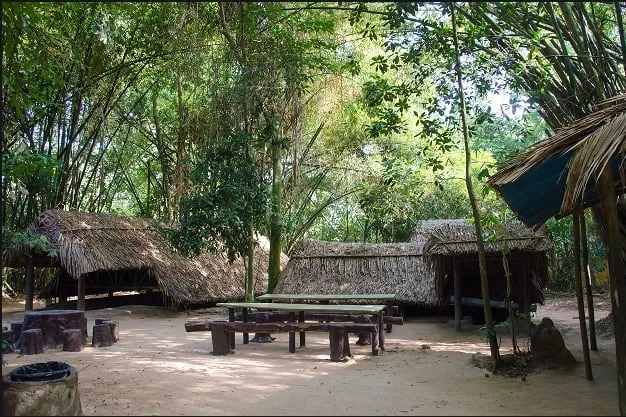Contents
ToggleIntroduction: Why Ta Van is Special
If you’re seeking an escape from Sapa’s busier tourist spots and yearning for a taste of authentic mountain life, Ta Van Village is the perfect retreat. Tucked away in the misty highlands of northwest Vietnam, this charming commune is home to the Giay, Hmong, and Red Dao ethnic groups.
Here, terraced rice fields cascade down the hillsides, wooden stilt houses stand gracefully above lush valleys, and the pace of life flows gently with the rhythms of nature. Ta Van isn’t just a place to visit—it’s a chance to slow down, connect with local traditions, and immerse yourself in the breathtaking landscapes of the Hoang Lien Son range.
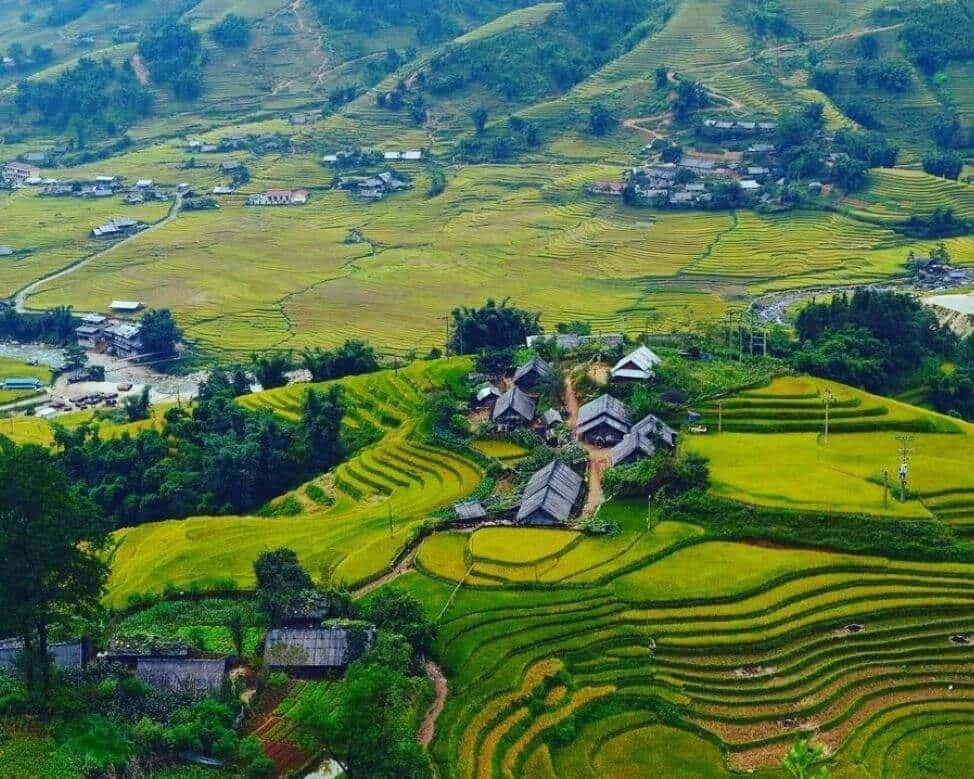
Where is Ta Van Village?
Just 12 kilometers from Sapa Town in Lao Cai Province, Ta Van Village nestles in the heart of the Muong Hoa Valley—widely regarded as one of the most spectacular landscapes in northern Vietnam. The drive along Cau May Road is a journey in itself, with sweeping views of the Hoang Lien Son mountain range and the silver ribbon of the Muong Hoa stream weaving through the valley below.
The name “Ta Van” comes from the Hmong language, meaning “big arc”, a poetic nod to the village’s gentle curve along the hillside. With its blend of cultural richness and natural beauty, Ta Van is a perfect destination for travelers who crave both deep cultural immersion and jaw-dropping scenery.
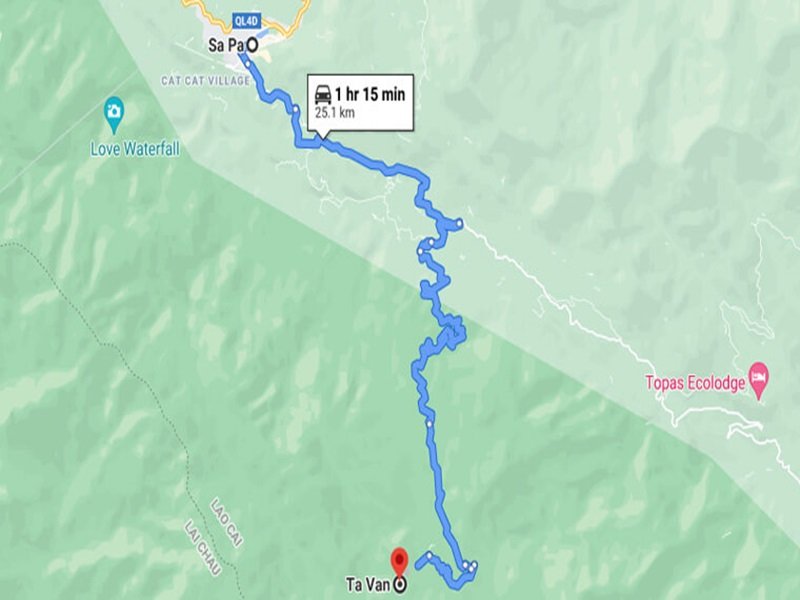
Best Time to Visit Ta Van
Ta Van is beautiful year-round, but each season paints the village in a different mood:
- Cloud-Hunting Season (September – April) – Early mornings and late afternoons are wrapped in mist, giving the valley an ethereal, dream-like charm.
- Golden Rice Season (September & April) – Terraced fields blaze in shades of gold just before harvest, making every view look like a living postcard.
- Water Season (May – June) – Freshly planted paddies glisten like mirrors, perfectly reflecting the sky and surrounding mountains.
- Plum Blossom Season (mid-February) – For a brief 2–3 weeks, the hillsides are blanketed in delicate white blossoms, turning Ta Van into a springtime fairytale.
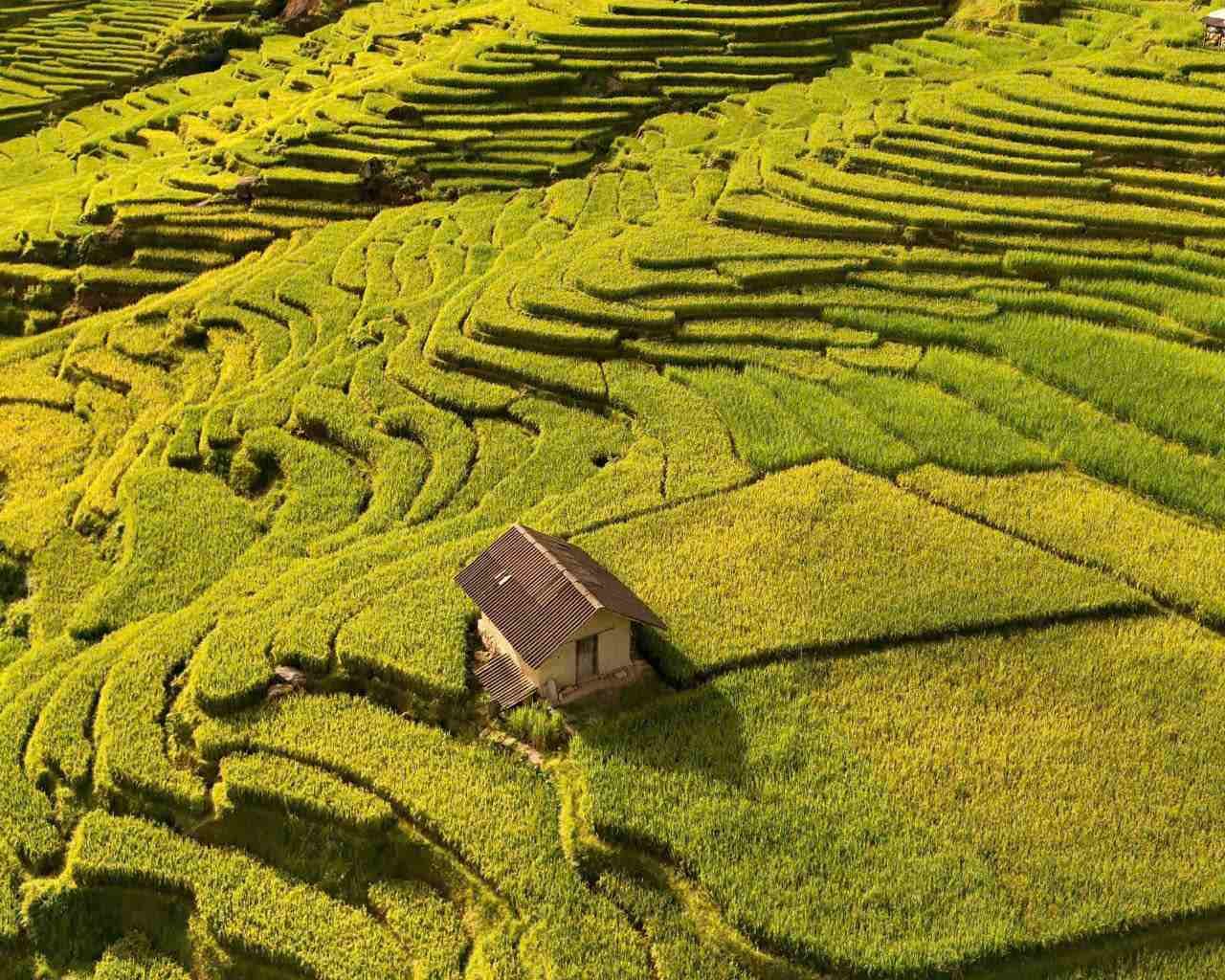
Why Ta Van is the Best Village to Visit in Sapa
While Cat Cat Village has become heavily commercialized, Ta Van still preserves its authentic charm. Life here moves at a gentle pace — you can wander through emerald valleys, watch farmers tending their rice paddies, and share smiles with locals without the crowds.
Staying in a family-run homestay is a highlight: think warm hospitality, home-cooked mountain meals, and waking up to golden sunrises spilling over the terraced hills. It’s a place where you can truly slow down, connect with the land, and experience Sapa’s culture in its purest form.
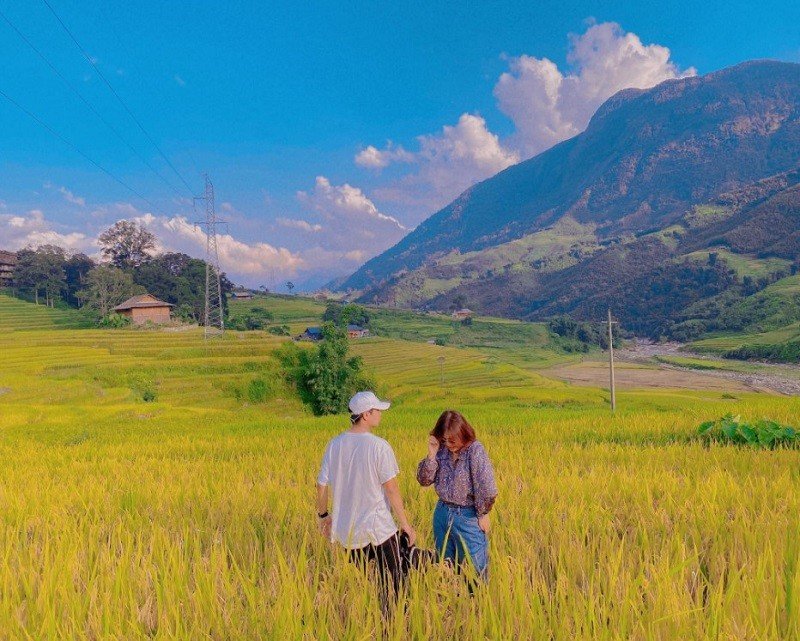
How to Get to Ta Van Village
Ta Van is only about 12 km from Sapa Town, but the journey itself is part of the experience. The road winds through the Muong Hoa Valley, with sweeping views of rice terraces, mountain peaks, and the gentle Muong Hoa stream below.
Ways to get there:
- Motorbike: Perfect for adventurous travelers who want to feel the wind in their hair and stop for photos along the way. The ride is thrilling but requires skill — the road can be narrow, steep, and slippery, especially after rain.
- Car or Taxi: The most comfortable and safest choice, particularly in foggy or wet conditions. Local drivers know the terrain well, so you can simply relax and enjoy the scenery.
Tip: If you’re planning to stay overnight, arrange a round-trip with your driver or rent a motorbike for more freedom to explore nearby villages

Top Things to Do in Ta Van
6.1 Trekking Through Rice Terraces and Bamboo Forests
Trekking is the best way to truly connect with Ta Van’s natural beauty. The village is surrounded by terraced rice fields that change their colors with the seasons—from lush green in summer to shimmering gold before harvest. Follow winding dirt paths into the Ta Van Bamboo Forest, where sunlight streams through tall bamboo archways, creating a magical, almost cinematic atmosphere.
6.2 Visit the May Bridge & Muong Hoa Stream
No trip to Ta Van is complete without seeing Cầu Mây (May Bridge), a charming bamboo suspension bridge that has stood for more than 20 years. It’s a favorite spot for rustic, Instagram-worthy photos. Just a short walk away flows the Muong Hoa Stream, its glassy waters mirroring the surrounding terraces and mountains. Sunrise here is especially breathtaking.
6.3 Stay in a Traditional Homestay
For an authentic Sapa experience, spend a night in a traditional homestay run by Hmong, Dao, Tay, or Giay families. Wake up to mist rolling over the valley, help with rice planting or harvesting, and share evenings over home-cooked meals, corn wine, and warm conversations by the fire.
6.4 Try Batik Workshops & Ethnic Costumes
Ta Van is a hub for local craftsmanship. Join a batik workshop to learn the centuries-old art of wax-resist dyeing, or try on traditional ethnic clothing for vibrant, keepsake photos. Many workshops are run by women’s cooperatives, helping preserve cultural heritage.
6.5 Enjoy a Red Dao Herbal Bath
After a long trek, reward yourself with a Red Dao herbal bath—a steaming wooden tub filled with over 120 kinds of medicinal herbs. This traditional remedy is believed to relieve muscle aches, improve circulation, and leave you deeply relaxed.
6.6 Explore the Ta Van Weekly Market
Every weekend morning, the Ta Van Market comes alive with colors, scents, and sounds. Locals gather to sell handmade brocade, intricate silver jewelry, mountain-grown rice, and herbal medicines. It’s also a great place to try fresh snacks or watch cultural exchanges between ethnic groups.
6.7 Taste Ta Van’s Local Cuisine
Ta Van offers plenty of delicious mountain flavors:
- Thang Co – A traditional herbal stew, often enjoyed during festivals.
- Cap-Nach Pork – Tender, flavorful pork raised in the highlands.
- Salmon & Sturgeon Hotpot – A warming dish perfect for chilly evenings.
- Grilled Spiced Skewers – Popular street-side snacks that are smoky and full of flavor.
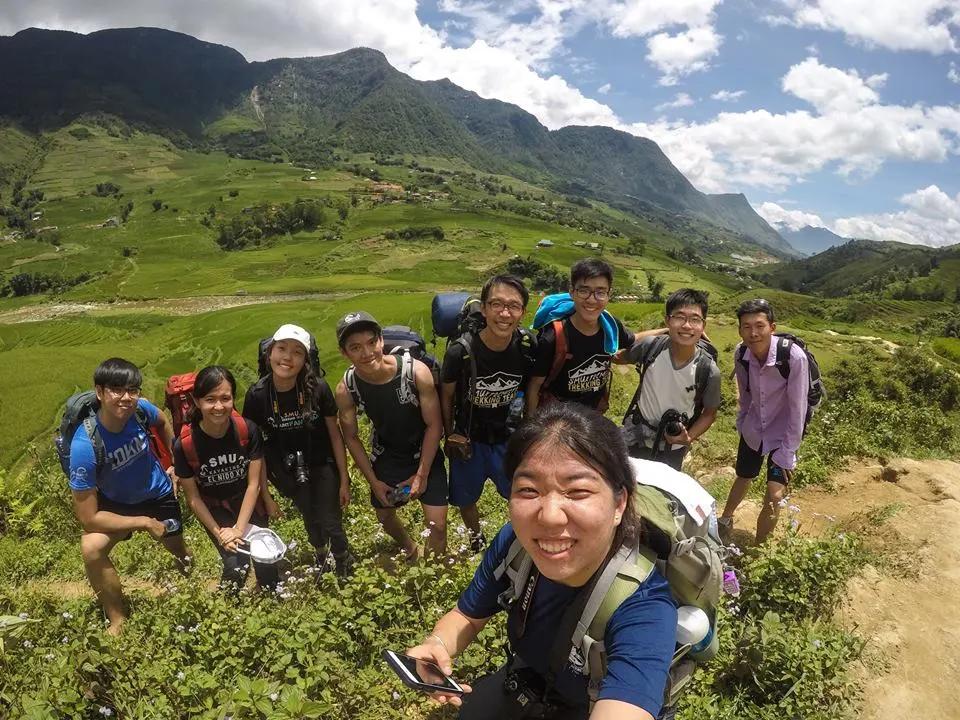
Final Thoughts
Ta Van Village offers something rare: an authentic, slow-paced experience in the heart of the Sapa highlands. With its stunning landscapes, warm-hearted locals, and rich traditions, it’s more than a travel destination—it’s a place to connect with the soul of northern Vietnam.





